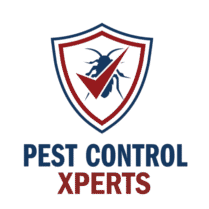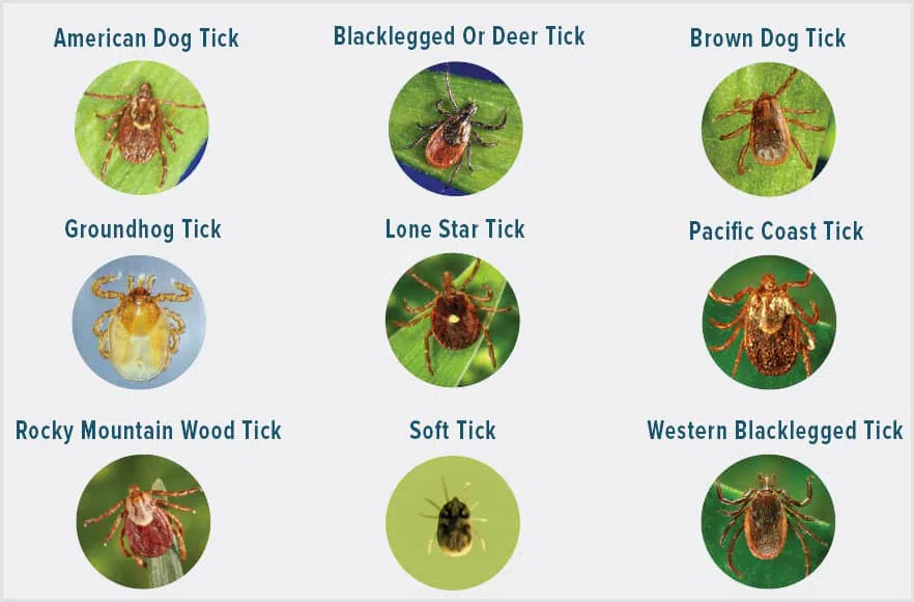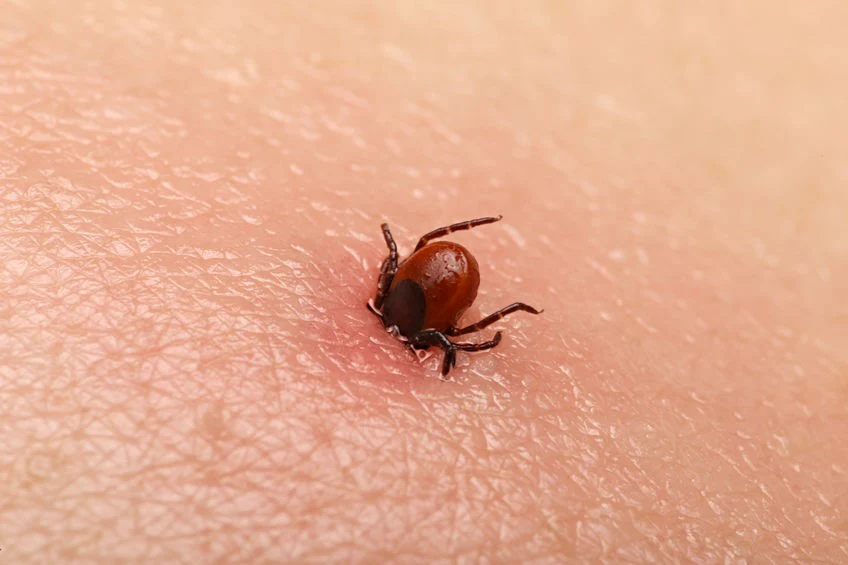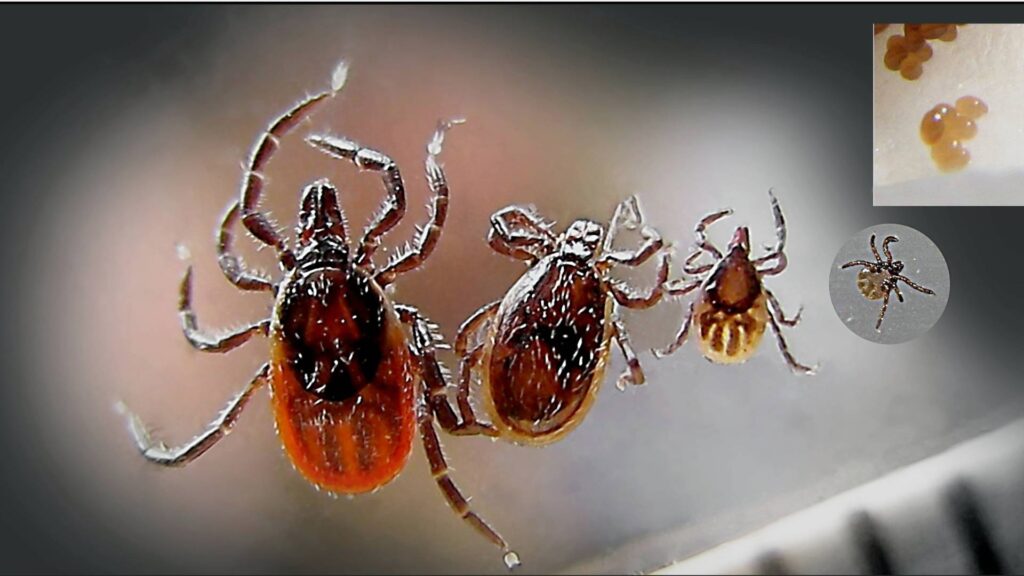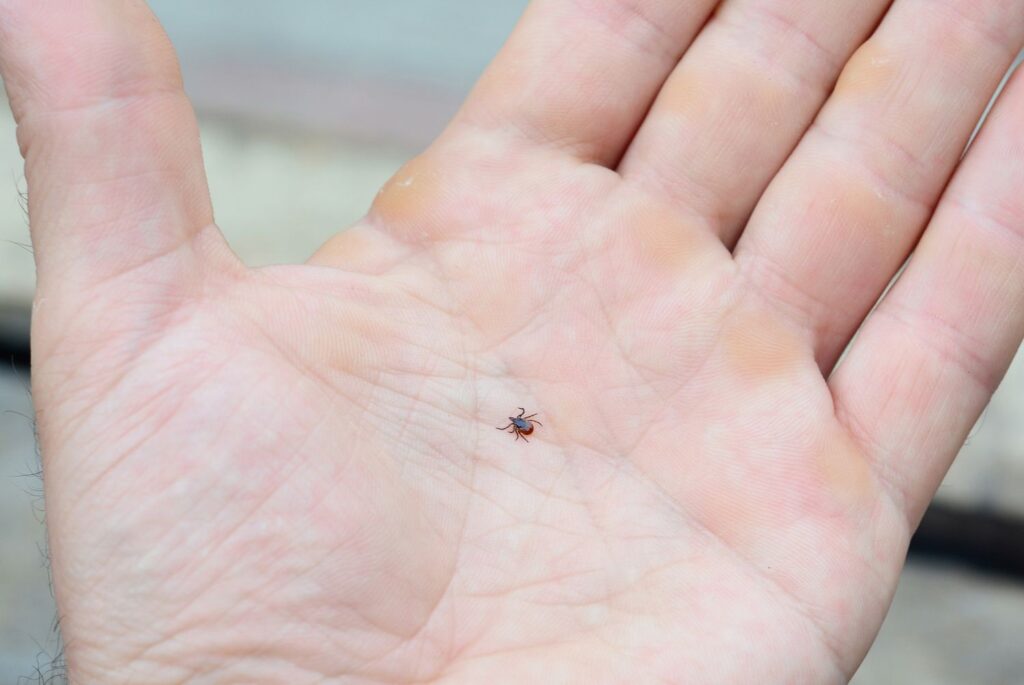A relaxing hike along the Meadowbrook Lake Trail or an afternoon at Silver Springs Park can turn unsettling once a tick fastens onto a sleeve or pet’s fur. These small arachnids feed on blood and carry organisms that transmit Lyme disease, ehrlichiosis, and Rocky Mountain spotted fever. Stow sits where suburban neighborhoods meet the wooded hillsides of Cuyahoga Valley National Park, and that blend of manicured lawns, shaded creek beds, and abundant wildlife allows ticks to thrive from early spring until snow cover arrives.
Pest Control Xperts offers proven tick removal in Ohio for residents, property managers, and business owners across Stow. Whether you typed Stow pest control, tick exterminator in Stow, or how to get rid of ticks in Stow, this service page provides clear answers. Learn why ticks thrive here, the health risks they pose, and how our local team eliminates them while helping you maintain a safer yard or commercial landscape.
Why Ticks Thrive in Stow
Lake Effect Humidity
Although Stow lies miles from Lake Erie, prevailing winds carry moisture inland. High humidity reduces tick dehydration which helps nymphs survive under leaf litter in backyards near Fishcreek Road and Wood Hollow Metro Park.
Seasonal Temperatures
Ticks become active once ground temperatures reach about forty five degrees. In Stow that often occurs in late March when sunshine reflects off thawing snow packs. Activity peaks through June and July then rises again during warm days of October before winter dormancy.
Abundant Wildlife Corridors
White tailed deer travel wooded edges of the Cuyahoga River valley, raccoons explore compost piles, and squirrels dash between maple trees. Each animal can transport hundreds of immature ticks that later drop into turf along fence lines or garden beds.
Popular Outdoor Recreation
Families walk dogs at Bow Wow Beach, joggers circle the Stow Community Center loop, and campers pitch tents in nearby metro parks. Shoes, socks, and picnic blankets brush ticks from vegetation, giving them an easy ride indoors.
Dense Landscaping and Lawn Irrigation
Many homes feature evergreen shrubs tight to siding and automatic sprinklers that keep grass lush. Shade plus steady moisture forms a microclimate where larval ticks develop safely until a host passes by.
Understanding these local factors lets Pest Control Xperts place treatments where ticks shelter and time service visits to match their life cycle.
Common Tick Species in Ohio
Blacklegged Tick
Also called the deer tick, this species carries the bacterium that causes Lyme disease. Adults appear dark reddish brown while nymphs are smaller than a poppy seed. They favor shaded leaf litter and overgrown foundation beds.
American Dog Tick
Larger than deer ticks and patterned with brown and whitish markings. They climb tall grass in sunny areas such as soccer sidelines at Oregon Trail Park and can transmit Rocky Mountain spotted fever.
Lone Star Tick
Named for the single white spot on the adult female back, this tick moves aggressively and feeds on many hosts including dogs and people. Lone Star ticks expand northward and now occupy pockets of Summit County.
Each species seeks hosts at slightly different heights and seasons so inspection and treatment plans must address all three.
Problems Ticks Cause
- Serious Illness
A single infected bite can transmit Lyme disease leading to fever, joint pain, and long term neurological issues without prompt treatment. - Pet Health Concerns
Dogs can develop canine Lyme disease or ehrlichiosis which may require antibiotics and blood tests. Severe infestations cause anemia in puppies and older pets. - Allergic Reactions
Tick saliva triggers localized swelling and itching. In rare instances Lone Star tick bites induce a meat allergy called alpha gal syndrome. - Indoor Infestations
A tick that detaches inside a home can lay thousands of eggs in floor cracks or under area rugs, creating a hidden infestation that emerges weeks later. - Outdoor Activity Reduction
Fear of tick bites discourages children from backyard play and keeps hikers away from the scenic Yellow Creek Trail.
Because these outcomes can be costly and stressful, professional tick control remains the best solution for safety and peace of mind.
Why Professional Exterminator Services Are Essential
Over the counter sprays offer limited coverage and usually break down after the first rainfall. A trained exterminator in Stow combines inspection, precise application, and ongoing monitoring to deliver long lasting results.
Comprehensive Inspection
Technicians drag a white cloth across turf and leaf litter to collect ticks for identification. They map shaded seating areas, dog runs, and narrow passageways where wildlife enters yards.
Integrated Treatment Strategy
Our program uses residual vegetation sprays, granular products that activate with moisture, and habitat modifications. Applications target a three foot band along property edges, the base of ornamental plantings, and ground under decks where pets nap.
Timing That Matches Life Cycle
Early spring service reduces emerging nymphs, midsummer applications knock down adult dog ticks, and an autumn visit prevents overwintering deer tick adults.
Pet and Family Friendly Approaches
We coordinate with veterinarians so property treatments work in tandem with topical or oral preventives on animals. Application schedules respect family routines and require minimal downtime.
Ongoing Monitoring
Sticky traps near previous hotspots provide evidence of population decline. Follow up visits verify success and allow immediate adjustment if new ticks appear after heavy rain.
Only professional grade products applied by trained experts can reach deep turf layers and survive the humid conditions common in Stow.
Pest Control Xperts Process for Tick Removal in Stow
Step One: Property Interview and Assessment
We discuss pet habits, recent tick encounters, and yard usage. A perimeter walk identifies dense shrubbery, leaf piles, and shaded lawn patches requiring attention.
Step Two: Hotspot Mapping
Color coded flags mark areas of high tick density such as behind storage sheds or around swing sets. This visual map guides the treatment path.
Step Three: Customized Application Plan
Technicians prepare a low volume mist of residual acaricide for vegetation up to three feet high and a granular formulation for soil. Treatments avoid flowering beds that attract pollinators.
Step Four: Habitat Modification Guidance
Clients receive recommendations to trim lower tree limbs, rake leaves each fall, and create a clean stone border between lawn and woods. Reducing shade and moisture discourages tick larvae.
Step Five: Pet Zone Focus
Dog houses and fenced enclosures receive extra product. We suggest washing pet bedding weekly on hot cycles and checking fur after every outing at Silver Springs Park.
Step Six: Follow Up Inspection
Approximately three weeks later a technician repeats drag sampling and checks sticky traps. If activity persists, spot treatments are performed at no extra charge within the active program.
Step Seven: Seasonal Maintenance
Properties with heavy shade or deer traffic benefit from spring summer and fall visits. Annual plans include reminder emails so service never misses peak tick season.
Keeping Ticks Away Long Term
- Mow lawn to a height of three to four inches to limit humid thatch layers
- Rake and bag leaf litter promptly before it mats down over winter
- Stack firewood on racks at least fifteen feet from structures and elevate it off soil
- Place playground equipment on mulch or pea gravel in sunny parts of the yard
- Install motion activated sprinklers or scent repellent plantings to discourage deer feeding near foundations
- Wear light colored clothing and tuck socks when hiking local trails
- Perform full body checks and use fine tipped tweezers to remove attached ticks promptly
- Use veterinarian recommended preventives on pets year round thanks to mild Ohio winters
Consistent habits paired with professional maintenance create a yard where family and friends spend time without constant tick worries.
Neighborhood Insight: Stow Service Highlights
- Homes near Meadowbrook Lake
Increased morning fog adds ground moisture. We schedule earlier spring service dates and focus granular treatments along seawall edges. - Properties backing Wood Hollow Metro Park
Dense tree canopy favors deer tick adults. Our plans include wider vegetation bands and suggestions for deer resistant landscaping. - Townhomes off Commerce Drive
Small courtyard lawns often harbor ticks in container plant soil. We treat pots and educate residents on safe plant relocation. - Retail campuses on State Route Eight
Employee picnic tables sit on lawn perimeters. Evening treatments after closing hours protect staff while avoiding midday customer traffic.
Local expertise ensures our team addresses micro climates and layout challenges unique to each block.
Why Choose Pest Control Xperts
- Regional Knowledge
Years of fieldwork in Summit County give our technicians firsthand insight into tick peaks tied to lake effect weather patterns. - Integrated Technique
We combine inspection, residual products, habitat change, and education into one coherent program rather than a quick spray only approach. - Transparent Communication
After every visit clients receive digital reports with photos, product information, and clear next steps. - Safety First
Treatments are low odor and applied with precision. Reentry times are explained before we leave so family routines continue smoothly. - Results Commitment
If ticks appear during the active service term we return promptly to adjust tactics until trap checks confirm control.
Take Back Your Yard
Ticks do not need to dictate when children play or where pets roam. Pest Control Xperts provides effective tick removal in Stow using locally tuned methods and a science backed approach. Protect health comfort and property value by scheduling an inspection with our experienced exterminator team today. Enjoy outdoor spaces with confidence all season long.
